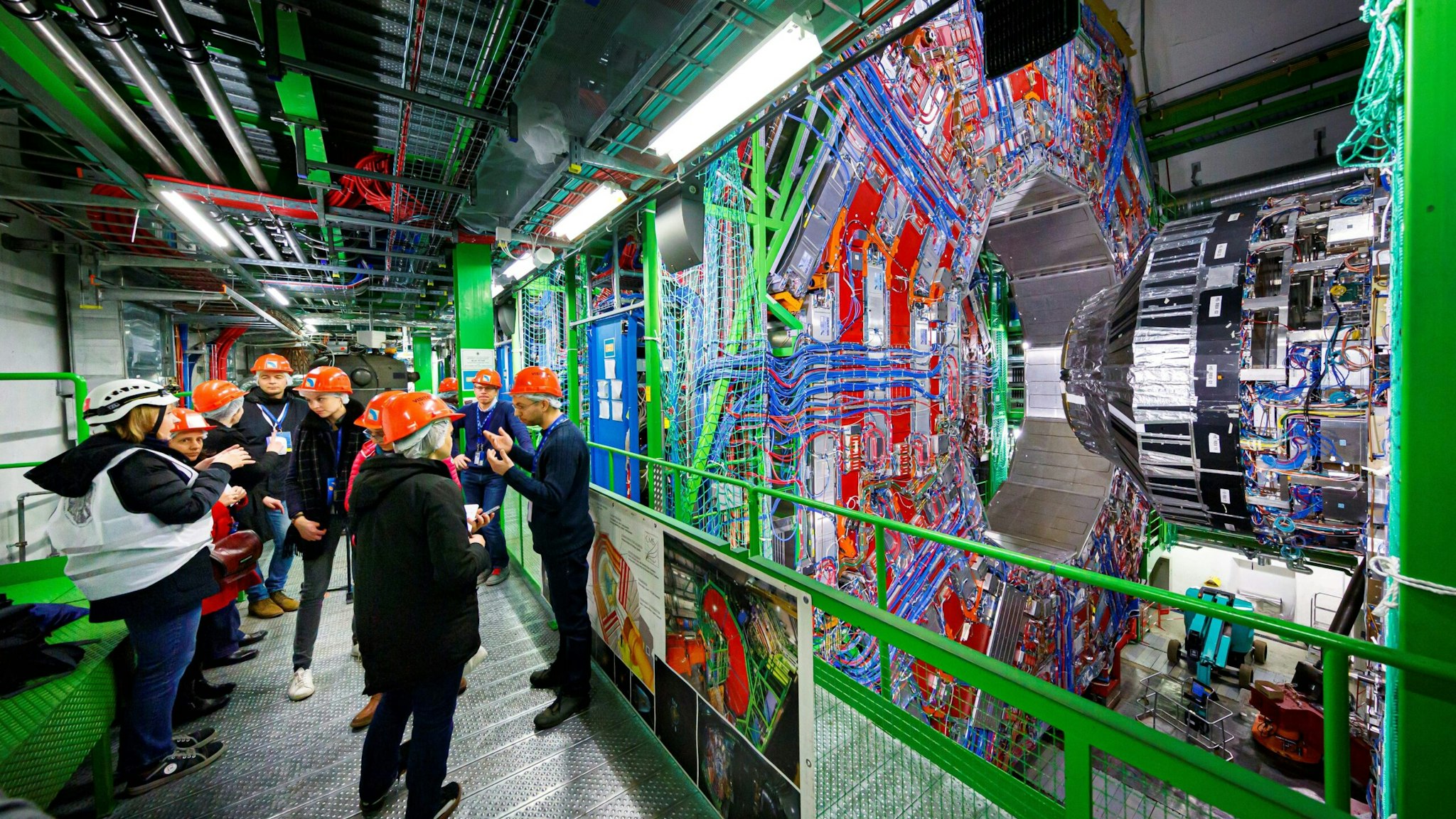Europe is about to fire up the giant atom smasher that helped scientists discover the so-called “God particle,” prompting wacky internet fears it could create a black hole that swallows the world or open a portal to Hell.
The Large Hadron Collider, in a giant physics lab near Geneva, has been dormant for the last three years. The European Organization for Nuclear Research, also known as CERN, intends to restart the particle accelerator this week in a search for anti-matter and answers to more of the universe’s most vexing mysteries.
“CERN will restart their large Hadron Collider next week, July 5th,” tweeted Patriot Mimzy. “They are messing with things that don’t need to be messed with.”
CERN will restart their large Hadron Collider next week, July 5th.
They are messing with things that don't need to be messed with.— 🌎 plɹoʍ uʍop-ǝpᴉsd∩ 🌎 (@patriotmimzy) June 30, 2022
“They’re trying to recreate the Big Bang & open a portal to another dimension at CERN with the Large Hadron Collider,” wrote Twitter user Andreas.
They're trying to recreate the Big Bang & open a portal to another dimension at CERN with the Large Hadron Collider, largest & most powerful particle accelerator. There's a statue of Shiva, a Hindu God, also known as the destroyer outside. It's being turned back on July 5 😧
— Andreas (@AndreasYilma) June 29, 2022
https://twitter.com/Jay_Apocalyptic/status/1540817189154033666?s=20&t=2V0YkiMTz-tMv8p30MwzeA
The enormous, 17-mile-long tube-like underground machine is built to conduct quantum experiments that could help explain how the Big Bang occurred. It works by colliding subatomic particles at near light speed, then recording what happens in the aftermath. In 2012, CERN scientists finally observed the long-theorized Higgs boson, or so-called “God particle.”
In the simplest terms, the Higgs boson is the particle associated with the Higgs field, an energy field that gives mass to elements that pass through it. When the collider smashes beams of protons at each other, the collisions create subatomic particles. The discovery of the “God particle” was the last piece of the modern physics puzzle and helped scientists understand how about a dozen subatomic particles smashing together during the Big Bang generated the mass we now see in the universe.
But many more questions remain unanswered for the CERN physicists, including why matter so vastly outnumbers anti-matter, why gravity exists, and what comprises vast parts of the universe that cannot be seen. If the Large Hadron Collider can help solve those mysteries, scientists believe, it may help us determine if other dimensions exist.
“One way of seeing evidence for other dimensions involves gravity – specifically, the theoretical particle associated with the gravity called the graviton,” reported Energy. “And if we can create gravitons at the Large Hadron Collider at CERN, we might be able to see evidence of them leaving our dimensions for other ones.”
To mark the 10-year anniversary of the discovery of the Higgs boson, CERN will conduct collisions at unprecedented energy levels inside the collider. Events will be streamed live on CERN’s social media channels.
CERN made its way into American pop culture in 2016 when it was part of a plot in the hit Netflix show “Stranger Things.” In the show’s first season, a super collider helped reveal another dimension known as the “upside down world.” And according to the Department of Energy, some of the science behind the plot was not as far-fetched as one might think.
“Actually, there is real, hard science behind the idea of extra dimensions, and the Department of Energy’s Office of Science is involved in studying this very thing, in both theory and experiment,” the DOE stated in 2017. “It turns out the ideas presented in the ‘Stranger Things’ episode ‘The Flea and the Acrobat’ are pretty much spot on.”
.png)

